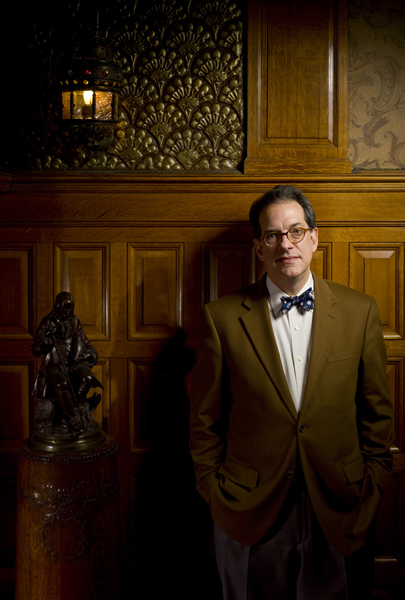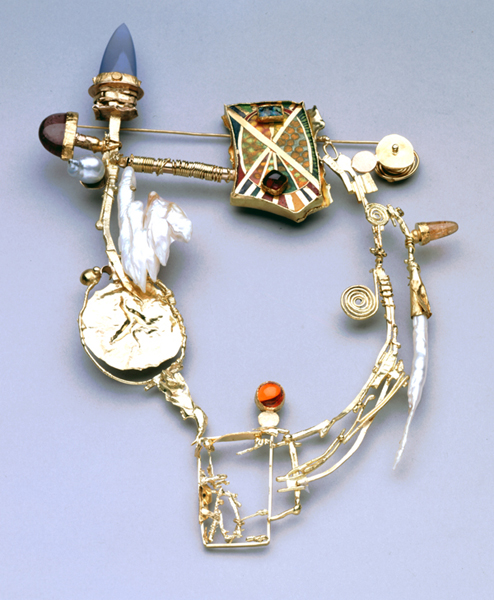
It is always cruel to ask a curator to pinpoint his or her favorite object. I have 40,000 things under my stewardship, ranging from the late 1400s to the present day and while some of them I frankly don’t care if I ever see again, there are many I love to the point of madness. And of course there are hundreds of objects in all media that I brought into this collection myself over the past 31 years. However, in terms of studio jewelry, a quick survey of what I’ve managed to acquire in the past two decades resulted in an easy choice. My most beloved studio jewel is Bill Harper’s large and eccentric work The Grand Barbarian’s Trapeze, from 1998.
To call this massive thing a brooch is to understate the case. At 9.75 inches high by 7 inches wide, wearing this fibula-based ornament would take a broad chest and not a little chutzpah. As its title suggests, it is meant to evoke the large-scale fibulae fasteners that held the heavy cloaks of mythical barbarian warlords. It is rough in its luxuriance and the open D-shaped body of the brooch calls to mind the swing of the trapeze in the title. The piece is part of a series Harper did for an exhibition at the Primavera Gallery in New York in 1998. This is the largest piece in the series and I admit that I chose it not just because it had everything by Harper that I wanted – great metalwork, brilliant enamel, virtuoso use of gemstones – but it was obviously something that no human being could wear and thus needed to be in a museum collection. Yes, I am that shallow.

It is opulent and brutal and almost painful to look at, evoking, as Bill himself told me, the searing pain of migraines. (Been there. Done that. Get it.) But it also immediately brings to mind the powerful nkisi nkonde figures of the Kongo people. These remarkable effigies are among the most powerful spiritual/medicinal sculptures from the African continent. The very fact that Bill Harper was inspired by these figures to create protective cases for his jewels says something about their power.
For a curator who collects jewelry across a wide spectrum, Bill Harper’s masterpiece offers a huge amount of impact in a single object.






